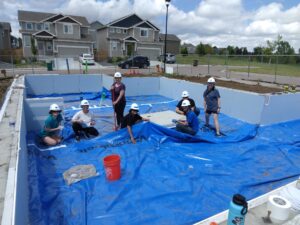This article originally appeared in the Spring 2024 print newsletter.
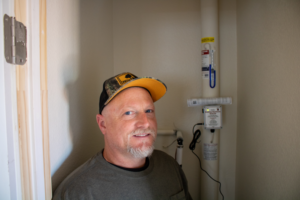
What is radon, and how does it impact Pikes Peak Habitat for Humanity’s home construction?
Radon is a known carcinogen that can cause lung cancer. No amount is safe, and the longer someone spends in a high-radon environment, the greater the risk to them. Most people are exposed to radon in their homes, because that’s where they spend the majority of their time.
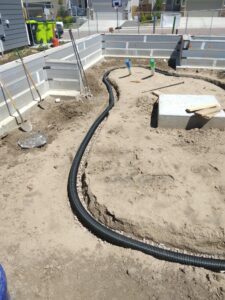
“Radon is a naturally occurring radioactive gas that comes from the radioactive decay of uranium in the ground,” explains Alex St. Clair, Pikes Peak Habitat construction supervisor. “It is found everywhere in different amounts, and depending on the nature of the soil below a home and the way the home was built, it can be drawn up into the house.”
The amount of radon in one residence can be high, while the house next door might have a low reading. The only way to know if radon is present is to test.
“Because half of all Colorado homes are above the EPA action level of 4pCi/L (picocuries per liter) and because we are homebuilder that truly cares about our families and knows how to build radon-resistant new construction, we have made the decision to build houses without radon,” says St. Clair.
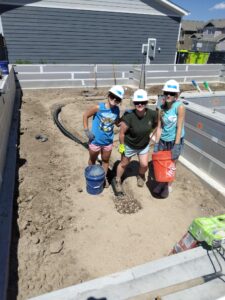
He holds certification as a Radon Mitigation Specialist and is also a certified Radon Measurement Professional, both of which are required by the Department of Regulatory Affairs for anyone overseeing the construction of radon mitigation systems in single-family houses.
“The homeowners are going to be living in these houses, [some of them] raising kids. The kids are
going to be living in these houses for decades, the hope is—that’s how we’re thinking about it,” says Eric Wells, Pikes Peak Habitat construction superintendent. “So if people are inhaling that radon, especially kids with the smaller lungs, it has an adverse effect.”
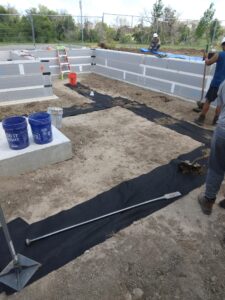
Pikes Peak Habitat installs a system called sub-membrane depressurization. This system creates suction under a sealed membrane on the crawlspace floor, catching radon from the soil, then uses an attic fan to eject that radon before it can enter the home. We also add active monitoring alarms that alert homeowners of any issues with the system, so they can call for service in a timely manner.
Because of these systems, radon numbers in Pikes Peak Habitat homes have tested at or below ambient outdoor radon levels. “The EPA wants us to stay below four picocuries per liter,” explains Wells. “Our houses are averaging 0.3, 0.4, 0.2.”

St. Clair emphasizes that radon mitigation is just one aspect of Pikes Peak Habitat’s overall focus on building homes that aren’t just affordable to purchase—but will remain affordable and safe for the families who live in them for years to come.
He believes this concern for the homeowners sets Pikes Peak Habitat apart from other builders.
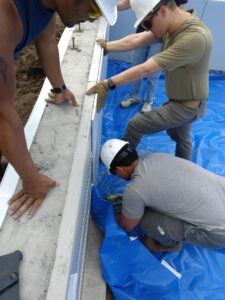
“That is a quality house,” he says, “because we’re invested in our people for a lifetime.”
“I’m really proud of Alex,” says Wells. Earning the certifications “was a lot of work, and I think from the conversations we had, it pushed him a little outside his comfort zone—and he still did it!”
St. Clair laughs. “I had to learn the physics of radioactive decay, and that part is stuff I’m not used to doing!”
“The knowledge that he has brought to the site and our building methods has been invaluable,” concludes Wells.
